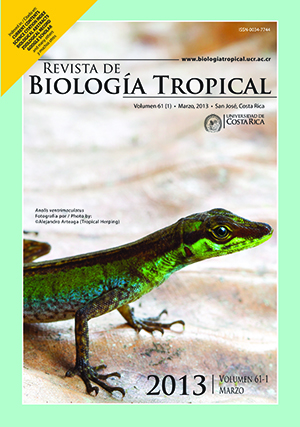Resumen
En pequeños asentamientos rurales, la adquisición de proteína animal está estrechamente relacionada con actividades de subsistencia, y su hábitos alimentares son determinados por la disponibilidad y diversidad de estos recursos. Este estudio examinó el consumo de pescado, caza y animales domésticos en siete comunidades tradicionales ribereñas de la Floresta Nacional do Tapajós, ubicadas en la Amazonia oriental Brasileña. La análisis se basa en los supuestos de modelos de la amplitud de la dieta y la teoría de forrajeo óptimo, se comparó la amplitud de dieta en siete comunidades ribereñas en periodo seco y lluvioso. La recolección de datos se realizó en cuatro viajes, dos en la temporada de lluvias y dos en la estación seca en el 2010, mediante entrevistas semi-estructuradas. El pescado fue consumido en el 60.4% de las comidas, siendo la fuente de proteína animal más consumida. Un total de 11 especies de animales silvestres y 46 especies de pescado fueron documentadas y la preferencia en el consumo cayó sobre T. pecari, C. paca y Hydrochoerus hidrochaeris y la preferencia por el consumo de pescado cayó sobre Plagioscion spp. Astronotus spp., Cichla spp. y Leporinus spp.






